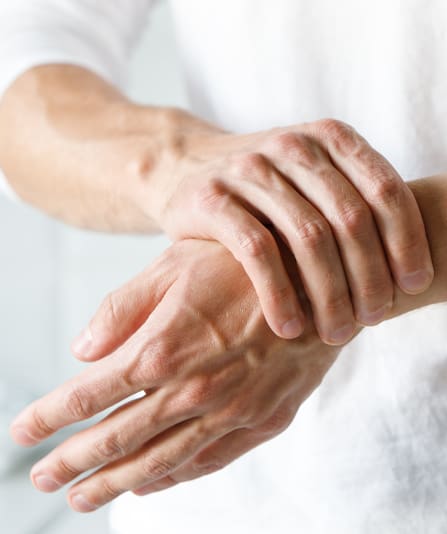Body & Face by Mr Ioannis Goutos
Burns

A burn is a particular type of surface injury occurring to the skin, typically in response to heat/high temperatures (including sun burn), or exposure to electricity and certain chemicals like acids. Burn injuries can range from minor scalding, to significant and life-changing burns which may be very deep, extensive in area or both. In the event of large, deep or chemical burns, or any burns that occur in children or on the face, neck, hands, joints or genitals, it is recommended to seek immediate medical attention at your closest A&E department.
Burns can initially be painful or painless and appear either red and blistered, pale or even charred, depending on the depth of the injury. However, following appropriate first aid and initial treatment, the recovery following significant burn injuries can be challenging. The resultant scarring, symptoms and psychological effects can cause a number of problems, which can impact the individual’s quality of life.
Mr Ioannis Goutos is a leading plastic surgeon, with an excellent reputation in both the academic and clinical field of burns and scars. He is a skilled and experienced surgeon and takes particular care to ensure that all aspects of his patients’ care are addressed, including physical, psychological and social factors. Each patient will undergo a thorough assessment and be able to discuss all of their treatment goals to ensure a tailored and individual treatment plan that is right for them.
Book your consultation today
Book nowAbout this condition
Burns are most commonly classified based on their depth. This helps to determine the appropriate initial medical treatment and also affects the long term outcome of the injury. The skin structure can be thought of in 3 layers:
- Epidermis – the most superficial layer of the skin, which contains different types of skin cells including melanin (i.e colour) producing cells.
- Dermis – the deeper tissue of the skin ,which contains small blood vessels, nerves and hair follicles.
- Subcutaneous tissues/fat – the deepest layer which separates the skin from the underlying muscle. It contains larger blood vessels and fatty tissue.
The appearance and symptoms of a burn injury will depend on which skin layer the injury reaches.
- Superficial epidermal burn: this only affects the most superficial layer of the skin. It can be painful and red in appearance but should not cause any blistering.
- Superficial partial thickness burn: this will damage the epidermis and also the top of the dermal layer; it typically causes blistering in addition to pain, swelling and redness.
- Deep partial thickness burn: this is when the burn injury has caused damaged to the epidermis and a large part of the dermis. It can cause pain and blistering, although if it is deep enough, the wound may appear blotchy, dry and painless
- Full thickness burn: these occur when the burn injury has penetrated all 3 layers of the skin. These are typically painless and will appear very pale or leathery.
Significant burn injuries require prompt and effective first aid measures to prevent the individual from becoming unwell. Due to the breakdown of the skin and its natural properties, those with burn injuries are at a high risk of dehydration and infection until the damaged skin has healed or been repaired.
Once healed, the new skin will be particularly sensitive to sunlight, chemical exposure and temperature, which can all cause additional irritation. It is recommended to look after any burn-related scars by ensuring good skin hygiene, avoiding any products containing irritants, and regular moisturisation with a non-perfumed cream or ointment. Massage techniques can also be helpful in promoting and maintaining good scar quality.
Unfortunately, some individuals experience scarring that causes long term pain or itch. If the injury has occurred over a large area of skin or overlying a joint, the scarring may become contracted and cause problems with movement. Many people with scarring related to burn injuries also experience feelings of low mood or anxiety and can have concerns about their appearance leading to low self-esteem and confidence. Although difficult to treat, there are a number of effective options to help reduce the effects of burns and scarring in the long term. Optimal management often requires the input of a multi-disciplinary team of clinicians who are experienced in managing individuals with burns.
Treatment options to reduce the symptoms and appearance of burns include:
- Topical treatments, such as silicone gels/strips
- Compression garments
- Laser treatments
- Needling sessions
- Steroid injections
- Surgical management, including scar revision surgery, artificial skin, skin grafting and tissue expander treatment. The most appropriate surgical procedure will be dependent on the type, location and associated symptoms of the scarring.
As well as reducing the physical appearance of the scars, it is also important to address any psychological or emotional factors associated with burns injuries, as this can have a significant influence on an individual’s recovery. Some people may also benefit from physiotherapy or occupational therapy to help them return to their normal activities.

Testimonials
Mr Goutos is delighted to share some of his patient and peer feedback on their experiences of his services.











